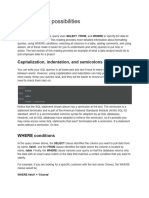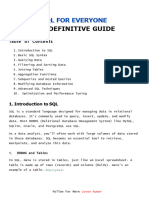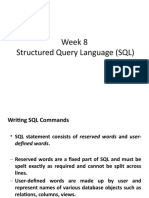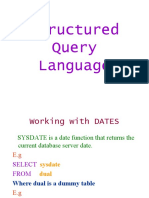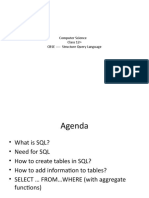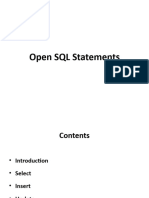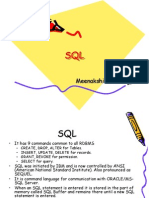0% found this document useful (0 votes)
15 views2 pagesHow SQL Should Look Like
The document provides a comprehensive SQL syllabus with examples focusing on proper formatting and syntax. It includes examples of clean SQL code using Common Table Expressions (CTEs), JOINs, and window functions, along with formatting tips for readability. Additionally, it emphasizes the importance of visual style in SQL code to enhance professionalism and maintainability.
Uploaded by
jawarimandiofficialCopyright
© © All Rights Reserved
We take content rights seriously. If you suspect this is your content, claim it here.
Available Formats
Download as PDF, TXT or read online on Scribd
0% found this document useful (0 votes)
15 views2 pagesHow SQL Should Look Like
The document provides a comprehensive SQL syllabus with examples focusing on proper formatting and syntax. It includes examples of clean SQL code using Common Table Expressions (CTEs), JOINs, and window functions, along with formatting tips for readability. Additionally, it emphasizes the importance of visual style in SQL code to enhance professionalism and maintainability.
Uploaded by
jawarimandiofficialCopyright
© © All Rights Reserved
We take content rights seriously. If you suspect this is your content, claim it here.
Available Formats
Download as PDF, TXT or read online on Scribd
/ 2


